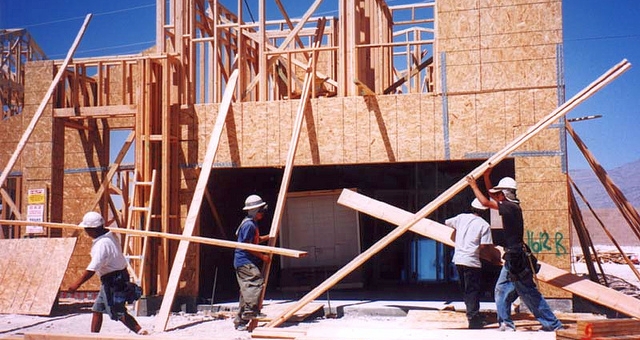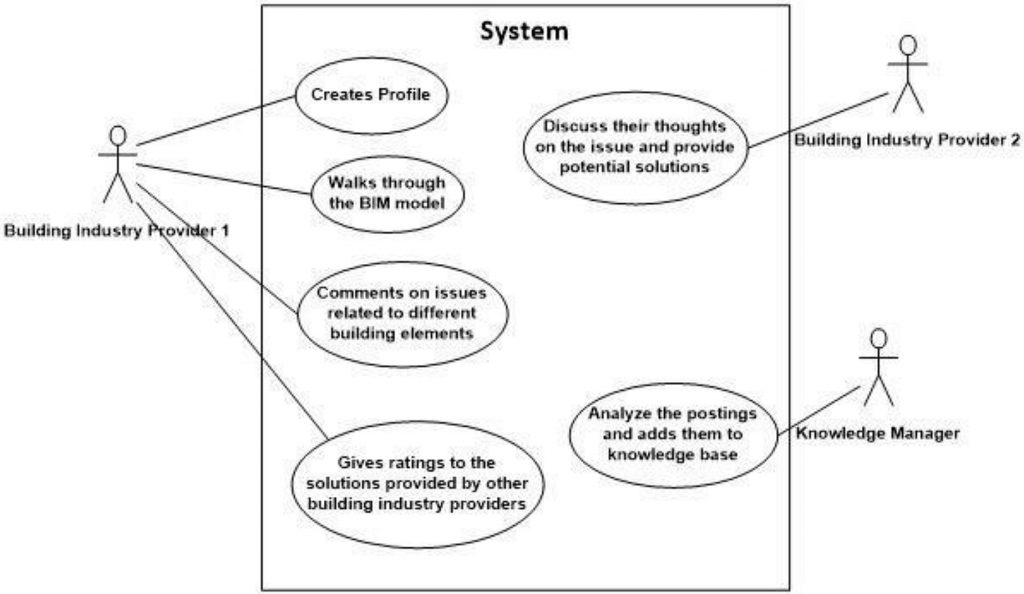
Case study of knowledge management in the construction industry using a socio-technical platform
This article is part of an ongoing series looking at knowledge management (KM) in the building and construction industries.
Poor knowledge management is one of the factors contributing to low productivity in the construction industry, with the mistakes made in projects often repeated in the future.
As discussed by George Quezada, a Research Scientist with Data61, the introduction of digital collaboration platforms such as Building Information Modelling (BIM) is changing the construction industry. BIM software creates a 3D visualisation of a building, but also extends beyond this to show scheduling, cost control, facility management and energy performance monitoring.
BIM s being widely adopted. For example, beginning this year the UK Government has made it mandatory for all centrally funded work to be undertaken using BIM, and buildingSMART Australasia is advancing a National Building Information Modelling Initiative for Australia. Australia’s Productivity Commission has recommended that BIM be used in complex infrastructure projects, and the Queensland Government will progressively implement BIM in all major state infrastructure projects by 2023.
An extension to BIM is SocioBIM1, which recognises that there is an important role in infrastructure and construction for people beyond the designers, contractors, and facilities managers who are typically involved in BIM. SocioBIM combines social networking with BIM into a socio-technical platform that involves the general public, in particular building occupants or infrastructure users.
SocioBIM has so far been used primarily in pre-construction and post-construction phases, but a recent paper2 looks at the application of SocioBIM during construction, where it deals with:
…two way interactions between building professionals relating to issues such as constructability, productivity, site safety, lessons learnt quality issues etc. This paper is based on the hypothesis that use of a BIM based social platform in the construction phase for knowledge management can result in effective capture and reuse of tacit knowledge.
The paper explores this hypothesis using the case study of the construction of a smart home on the campus of The University of British Columbia (UBC) in Canada. The building of this home was a pilot project by AYO Smart Home, which has the goal of providing First Nation and other communities with affordable and durable housing that is culturally appropriate, highly liveable, and energy efficient. Construction of the home adopts a new approach using Magnesium Oxide (MgO) Structural Insulated Panel (SIP). This meant that challenges were anticipated during construction, making the home an ideal knowledge management case study.
The construction industry is effectively capturing explicit knowledge, but systems to capture tacit knowledge have not been developed. Social platforms like SharePoint and Confluence are widely used in a range of industries to capture and share knowledge, but using such platforms in construction is challenging due to the industry’s fragmentation, resistance to change, and relatively slow uptake of information technology, as well as the temporary nature of construction projects. Research has shown that in the construction industry, processes based on personal networks are more effective than the use of databases. Figure 1 shows how such a system can be envisioned.

In the system shown in Figure 1:
…the building industry provider, which include architects, contractors, site foremen, superintendents, workers, project managers etc., are able to walk through the BIM model of the facility. They can post comments regarding any issues related to constructability, quality, safety, clashes, or any other lessons learned related to a particular building element. They have the option of attaching pictures, writing microblogs, and tagging their colleagues or sharing their posts with a specific group of industry providers. The other users are then able to view these issues and engage in a social discussion on them resulting in collaborative decision making. The users are also given an option to provide a numerical rating to the postings by other users, which can establish a reputation of various users and get expert opinions on feasibility of solutions to issues.
A platform that can assist with facilitating this system is the free and open source Green 2.0, which brings together several core enabling technologies, being:
…open BIM for modeling buildings and related project information; social networks and social network analytics for supporting user interactions and investigating the results of this social interaction; energy analysis to model and provide feedback about the impact of various design alternatives; and business process modelling to model public users’ activities.
While not meeting all of the desirable requirements of a SocioBIM knowledge application, Green 2.0 was identified as having potential to demonstrate proof-of-concept of the system shown in Figure 1.
The platform was implemented for the installation of the pre-fabricated SIP panels, which took approximately 14 days. Challenges, issues, and successes were documented on a daily basis through interviews, time-lapse videos, and on-site observations. Interviews were conducted with five key roles, being the Project Manager, Architect, Site Superintendent, Structural Engineer, and Panel Installer. As it was not possible to impose the platform on participants in real time, an experiment commenced at the end of the panel construction activity, where graduate research students simulated the five aforementioned key roles.
The participants made a total of 44 comments, 24 of these being replies to other comments. Collaboration social networks were then mapped at the project and building element levels. The paper authors acknowledge that the success of the SocioBIM platform in assisting knowledge management in the construction phase can’t be explicitly evaluated from just one project. However, some observations could be made:
- The element graphs were useful in identifying the specific building components on which the most or least discussions happened. This can be useful in future designs, scheduling, fabricating etc.
- The 3D BIM model in the platform made the discussions more holistic and engaging as the visualization made it easy to identify conflicts between different building elements and to anticipate future risks related to delays, safety, or other issues.
- The size of the nodes was useful in identifying the most active participants in the discussions and, since each participant has their own profile, different kinds of analytics on this information could provide insights about the social construct of the discussions.
- The problem solving followed a collaborative approach and there was continuous feedback from different participants. This can ultimately result in creating a continuously evolving knowledge base of best practices that can be used in future projects.
The paper authors advise that while their research has shown proof-of-concept, “More research and case studies are needed to further assess the usability of such platforms.” Participants also made a series of recommendations for improving the functionality of the platform and make it more engaging for users:
- Have the option of tagging different participants, quoting comments from others, and rating the solutions of others.
- Add an ability to select multiple building elements at once to assign group comments.
- Include an ability to search for keywords within the comments.
- Add multimedia content to the comments.
- Provide a structured format for comments.
Header image source: Home Builder by Scott Lewis is licenced by CC BY 2.0.
References:
- Shoolestani, A., Shoolestani, B., Froese, T., & Vanier, D. J. (2015). SocioBIM: BIM-to-end user interaction for sustainable building operations and facility asset management. ↩
- Grover, R., & Froese, T. M. (2016). Knowledge Management in Construction Using a SocioBIM Platform: A Case Study of AYO Smart Home Project. Procedia Engineering, 145, 1283-1290. ↩
Also published on Medium.





